The mission of the Center for research in astrophysics of Quebec (CRAQ) is to conduct state-of-the-art scientific research in the field of astronomy and astrophysics in Quebec and to promote Quebec astronomy on the world stage. To achieve this, CRAQ researchers are united around a common theme in order to gain an overall vision for “Understanding the Universe“.
To carry out this colossal task, we are as much interested in microscopic astrophysical processes as in the formation of large structures in the Universe. The CRAQ thus covers the main research axes of modern astrophysics, from both theoretical and observational point of view: stellar astrophysics (white dwarfs, neutron stars, massive stars, binary systems, solar physics), brown dwarfs and extrasolar planets, galactic and extragalactic astronomy (interstellar medium, stellar formation, supermassive black hole, evolution of galaxies) and cosmology (dark matter, formation of large structures in the Universe). Research at the CRAQ is organized around the following themes:
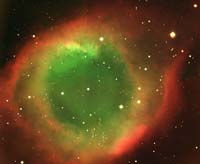 Formation, structure, evolution and death of stars
Formation, structure, evolution and death of stars
This research focuses on the study of stars, both from a theoretical point of view using models computed on super computers, and from an observational point of view where we use data obtained using an array of ground- and space-based telescopes, across the entire wavelength domain. We are interested in several steps of stellar evolution, ranging from the process of star-formation to their deaths as white dwarf stars, neutron stars and stellar black holes. The CRAQ is a major centre of stellar astrophysics research in Canada.
 Solar physics
Solar physics
The Sun’s magnetic activity cycle provides energy and modulates the frequency of all eruptive phenomena with impacts on the Earth, whether in terms of spatial weather, damage to technological infrastructure, or influence on long-term climate change. The research work of the group aims to improve our understanding of the physical mechanisms responsible for the large fluctuations observed in the amplitude and duration of this cycle of activity. Our recent innovative approaches in the study of the structuring effects of the solar magnetic field make it possible to envisage the coupling of the models of the activity cycle with those describing the variations of the spectral irradiance and of the solar luminosity during the cycle of activity, an essential step in order to better understand the possible role of solar activity on the evolution of the terrestrial climate in the long term.
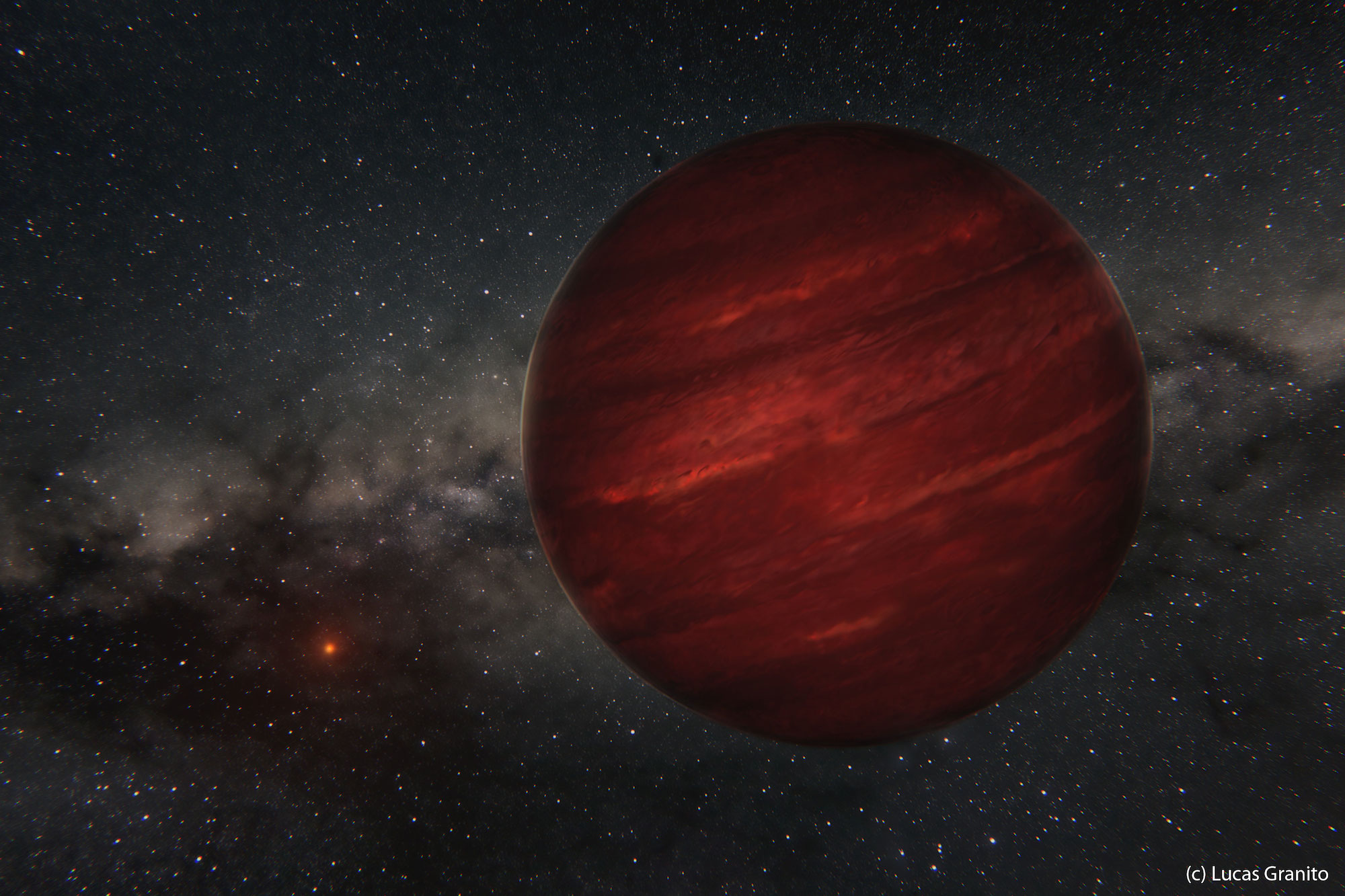 Exoplanets and brown dwarfs
Exoplanets and brown dwarfs
Several thousand extrasolar planets have been identified to date. These discoveries have revealed the diversity of planetary systems. Interesting statistical properties are emerging and should contribute to our understanding of the mechanisms of formation of these systems. Similarly, many brown dwarfs discovered in the solar neighborhood share several characteristics with the recently photographed giant planets and make it possible to better understand the latter. Through the development of astronomical instruments in the infrared domain, CRAQ astronomers are actively researching new extrasolar planets (or exoplanets) and new brown dwarfs, in order to better establish the statistical properties of these sub-stellar objects.
 Interstellar medium physics
Interstellar medium physics
The interstellar medium consists of three gaseous states (ions, atoms and molecules), a solid component (dust grains) and radiation. All these components are in close and constantly evolving interrelations. The stars, the main sources of the radiation, are created from this medium, evolve and die by returning heavier chemical elements and, often, add an important amount of mechanical energy. This entire process forms a vast, imbedded, evolutionary cycle which ensures the development of a galaxy. Because of the mixed nature of the interstellar medium, our observational approach covers a wide range of wavelengths, from the visible to the centimeter.
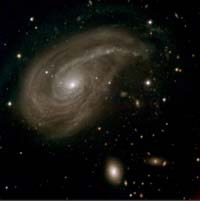 Stellar and gaseous structure, dynamics and evolution of galaxies
Stellar and gaseous structure, dynamics and evolution of galaxies
This topic combines research on the study of stars with those on the physics of the interstellar medium in order to understand the formation and evolution of galaxies, whether it is ours (the Milky Way) or other galaxies in the Universe. We try to better understand the interaction between the different scales of organization of matter in galaxies and between galaxies, including dark matter, which constitutes 50 to 90% of the total mass of galaxies, in order to put new constraints in the study of the origin and evolution of galaxies. Our approach is both observational, involving many instruments that we develop within the Center, and theoretical with our numerical simulations.
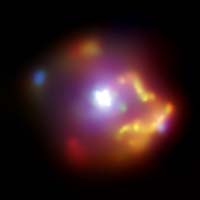 High-energy astrophysics
High-energy astrophysics
We study the origin of cosmic rays and high-energy gamma rays by analyzing Cherenkov radiation (created by the interaction of cosmic rays with the earth’s atmosphere) received on the ground. CRAQ researchers are trying to confirm that this radiation comes mainly from the core of active galaxies, possibly the most energetic objects in the universe. The researchers use the results obtained from the VERITAS (Very Energetic Radiation Imaging Telescope Array System) project. We are also interested on the study of the most extreme objects of the Universe including neutron stars and black holes. We are conducting several research projects on supermassive black holes, including the one in the center of our Galaxy. To achieve these objectives, we use data from several large telescopes including Chandra, NuSTAR and the Very Large Array (VLA).
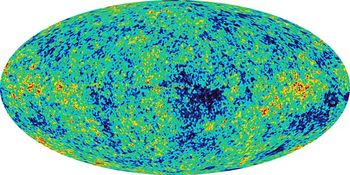 Cosmology
Cosmology
CRAQ researchers are interested in the study of the large scale organization of matter in the Universe. From an observational point of view, we contribute to experiments such as the South Pole Telescope project and the new large-field CHIME telescope to measure distortions in the cosmological fossil radiation originating from galaxy clusters. These experiments make it possible to measure with great precision the expansion rate of the Universe as well as the key role dark energy plays. We also develop semi-analytical theoretical models and visualization techniques for specific projects such as the formation and evolution of galaxy clusters as well as the reionization of the Universe and its effect on the formation of galaxies.
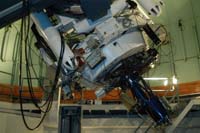 Design and manufacture of astronomical instruments
Design and manufacture of astronomical instruments
Experimental astrophysics, another major axis of the CRAQ, aims at the design and manufacture of many state-of-the-art astronomical instruments. Thus, not only do our researchers use many different instruments across the entire electromagnetic spectrum (gamma rays, X-rays, ultraviolet, visible, infrared, sub-millimetric, radio), but they are actively involved in the design of several of these instruments, for ground- and space-based telescopes (e.g. the Thirty Meter Telescope and the James Webb Space Telescope). Development activities involve major collaborations with local and national industry (INO, ABB-Bomem, ImmerVision, Photon etc., NüVü, Telops and ComDev). The instruments designed in our laboratories enhance the performance of national and international infrastructures (e.g. CFHT, Gemini, OMM, VERITAS, SPT, NuSTAR) presently used by the scientific community as well as those to come (e.g. CHIME, JWST, TMT). Thanks to the capacity of our members to coordinate all instrument development, the CRAQ is proud to be the leader in university-based astronomical instrumentation in Canada. We are making significant contributions to the progress of important research areas, with significant technological spin-offs for Quebec and Canada. In this context, the Observatoire du Mont-Mégantic (OMM) is a valuable tool for development, research and training. Equipped with half a dozen instruments (largely developed by our researchers), the OMM telescope provides an ideal testing platform for instrumentation in addition to providing observations to fuel our research programs.
The scientific activities of our members not only contribute to advancing astrophysical knowledge on the world stage, but the researchers are also involved in public outreach activities in Quebec. They address the fundamental questions that everyone ask about the universe that surrounds us and on the place we occupy within this universe.
